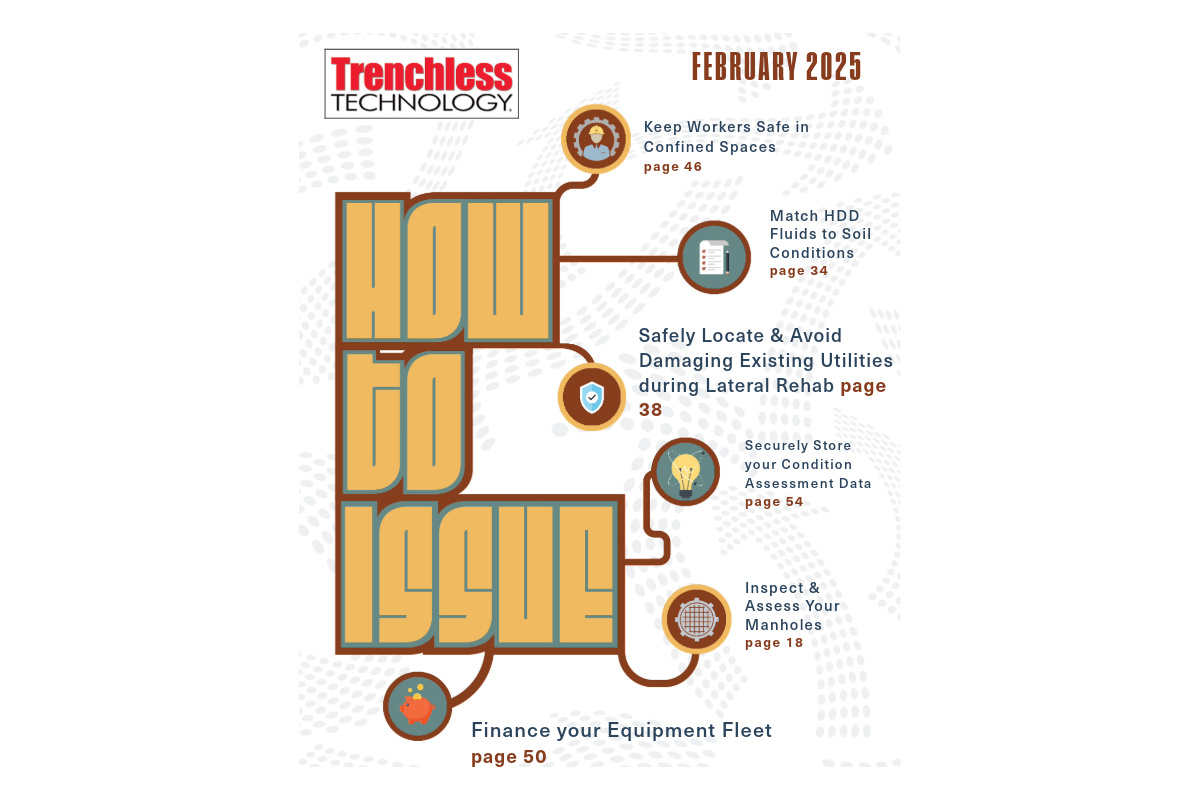Trenchless to Be Used in South Carolina City
But fixing the pipe, which is 2.7 miles long and in some places, nearly 5 feet in diameter, won’t be easy.
It’s 25 feet under ground in some places and parallels the Columbia Canal and the Congaree River. It crisscrosses under the Vista, the State Museum and the new USC baseball stadium.
It also runs under Elmwood Avenue’s Randolph Cemetery — the final resting place for eight of the state’s first black lawmakers and considered a national treasure.
But Columbia officials have a plan for fixing the pipe without touching a shovel.
Using trenchless technology, engineers will run a felt-like fabric material down a manhole and pull it through the pipe.
“It’s like turning a sock inside out,” said Ed Hart, senior project manager for B.P. Barber, who designed the project for the city.
The material is injected with a resin that, when doused with hot water or steam, expands and hardens, reinforcing the pipe’s walls.
Crews will have to shut down the pipe while they repair it, which will take about a year. In the meantime, city officials are buying enough polyurethane pipe to build a temporary replacement.
The replacement pipe will, with a few exceptions, be above ground and run along the Columbia Canal — which poses its own environmental hazards. The canal, which draws water from the river, is one of Columbia’s main water sources.
Contractors plan to hire at least two people whose sole responsibility will be to walk the line checking for leaks around the clock — like cowboys riding fences, only a lot dirtier.
The original concrete sewer line was installed sometime in the 1960s. Over the years, fumes rising from the sewage deteriorated the top of the pipe. When a pipe collapses, the earth falls into the pipe and blocks it.
It’s something that’s going on all around the country as cities’ systems reach a certain age. The difficulty is in knowing which part of a system is in most imminent danger of collapse.
Columbia officials say they can’t afford a kink in the Northeast line when as much as 20 million gallons of sewage move through it each day.
“It’s got to go somewhere,” said John Dooley, Columbia’s director of utilities and engineering.
Several months ago, a 300-foot section of the pipe near I-126 and Huger Street collapsed. City officials replaced the pipe, then sent a video camera through the rest of the line to investigate.
What they found was a pipe in peril, whose collapse could dump millions of gallons of raw sewage into the Columbia Canal.
Officials knew they would eventually have to repair the pipe, just not this soon. The city has about $500 million worth of water and sewer projects, and this sewer line repair is one of the largest on the list.
The city will pay for the $22 million project from the capital improvement budget in its water and sewer fund, which contains about $40 million.
That means a handful of other projects will have to be delayed until the city can finish its 2007-08 audit. Once the audit is finished, the city can move forward with plans to sell an $89 million bond — which is how cities and counties borrow money — for other water and sewer improvements.
Interim city manager Steve Gantt said he hopes to get the project started in the next 60 to 90 days, after putting it out for bid.
City Council members view the project as their own version of an economic stimulus. Hart said it could create as many as 100 jobs.
“I think we have to be mindful of things we can do that create jobs even though we’re in a tight budget,” Mayor Bob Coble said.
Gantt said he considered breaking the project into several pieces, but decided it would not be a good idea to have more than one contractor responsible for bypassing such a large sewer line.
Instead, the project will go to one contractor. But city rules require at least 20 percent of a job be bid out to subcontractors, frequently local firms.


